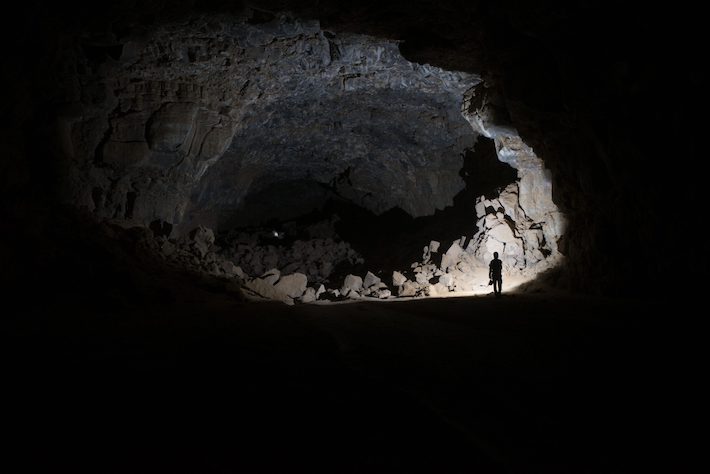 BRISBANE, AUSTRALIA—Nature News reports that hundreds of human and animal bones and more than 40 fragments of stone tools have been uncovered at the entrance to a lava tube cave in northwestern Saudi Arabia. The stone tools are thought to be as much as 10,000 years old, while the oldest human bone fragment has been dated to about 7,000 years ago. Zooarchaeologist Mathew Stewart of Griffith University and his colleagues said that the distribution of the artifacts indicates that the cave was occupied intermittently, for short periods. Nearby rock art depicting people with goats and sheep suggests that herders may have come to the cave for rest and shelter while traveling from oasis to oasis across the basalt plain of Harrat Khaybar, as they still do today. These routes have probably been used for thousands of years, explained Melissa Kennedy of the University of Sydney, since 4,500-year-old tombs have been found in the region. “People are very lazy,” she said. “You find the easiest route and you stick to it.” Read the original scholarly article about this research in PLOS ONE. To read about occupation of Icelandic lava tubes in the Viking Age, go to "The Blackener's Cave."
BRISBANE, AUSTRALIA—Nature News reports that hundreds of human and animal bones and more than 40 fragments of stone tools have been uncovered at the entrance to a lava tube cave in northwestern Saudi Arabia. The stone tools are thought to be as much as 10,000 years old, while the oldest human bone fragment has been dated to about 7,000 years ago. Zooarchaeologist Mathew Stewart of Griffith University and his colleagues said that the distribution of the artifacts indicates that the cave was occupied intermittently, for short periods. Nearby rock art depicting people with goats and sheep suggests that herders may have come to the cave for rest and shelter while traveling from oasis to oasis across the basalt plain of Harrat Khaybar, as they still do today. These routes have probably been used for thousands of years, explained Melissa Kennedy of the University of Sydney, since 4,500-year-old tombs have been found in the region. “People are very lazy,” she said. “You find the easiest route and you stick to it.” Read the original scholarly article about this research in PLOS ONE. To read about occupation of Icelandic lava tubes in the Viking Age, go to "The Blackener's Cave."
Occupation of Cave in Saudi Arabia Dates Back 10,000 Years
